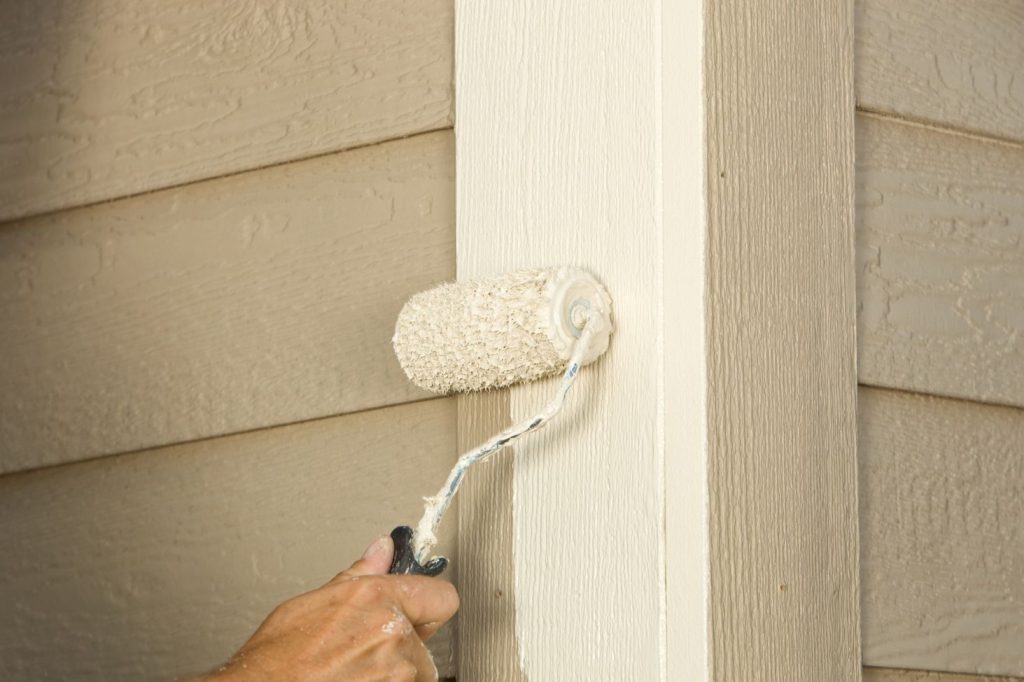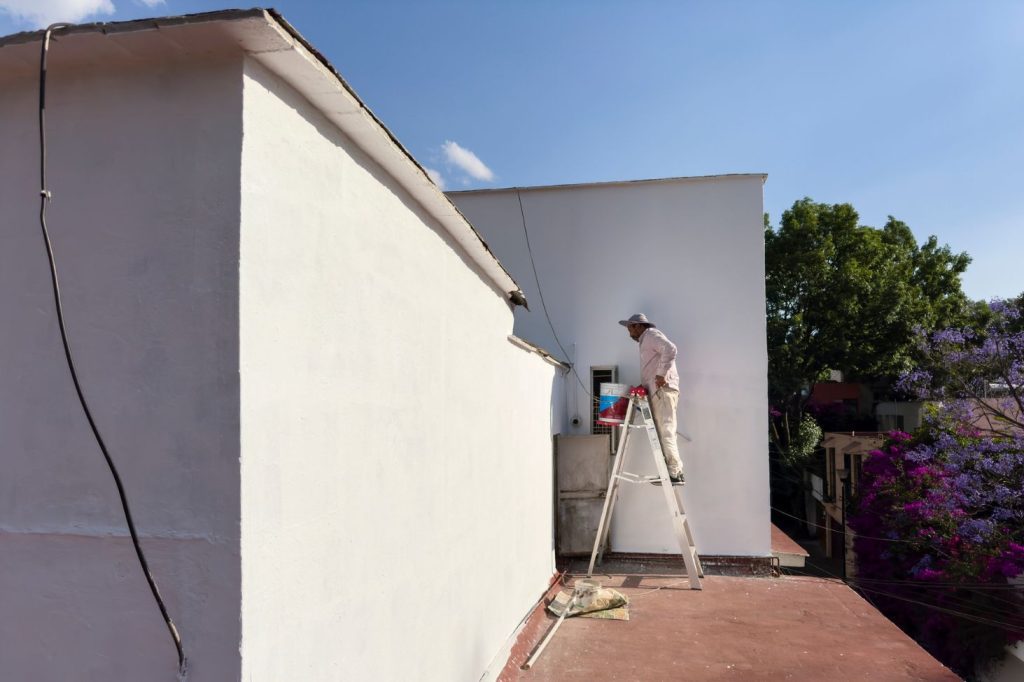Best Time of Year to Paint a House Exterior

Timing your exterior painting project right can make all the difference in how long your paint job lasts, and how good it looks. If you’re wondering when the best time of year to paint a house exterior is, the answer depends heavily on the weather, especially here in Vancouver. Choosing the right season means better drying conditions, smoother finishes, and fewer issues down the road.
Why the Right Time of Year Matters for Exterior Painting
An exterior paint job isn’t something you can do whenever it’s convenient. For the paint to cure properly and look its best, conditions need to be just right. Factors like temperature, humidity, and rain all impact how paint dries, cures, and adheres to surfaces.
If you rush into a house painting project during the wrong season, you might end up with peeling, uneven coverage, or poor longevity. And in cities like Vancouver, where the weather is unpredictable and wet for much of the year, finding a solid window of time for exterior painting can be a real challenge.
Paint needs proper dry time and consistent temperatures to bond well. Cold nights or damp materials can interfere with the paint curing process, leaving you with results that just don’t last. That’s why understanding your local climate and painting conditions is the first step to a high-quality, long-lasting finish.
Best Seasons for Exterior House Painting
If you’re wondering when to paint your house, the best weather to paint outside usually happens during early summer and early fall. These seasons offer the most consistent conditions—temperatures stay mild, rain is less frequent, and humidity levels are generally low, which is ideal for paint to dry and cure properly.
In Vancouver and other parts of the Lower Mainland, the dry season typically starts around late May or early June and can run into September, depending on the year. These months provide a more reliable stretch of dry weather, making them the go-to time for most exterior house painting projects.
Spring can work too—but in Vancouver, it’s often hit or miss. While April and May might have some warm, sunny days, they also come with unpredictable rain. If you’re painting in spring, it’s critical to check the forecast and make sure there are at least a few dry days in a row before and after your project.
By late fall, temperatures often dip below 10°C overnight, and moisture from dew or rain can interfere with the paint’s ability to bond. Winter painting is rarely an option in coastal or northern climates, as cold and damp conditions can lead to cracking, peeling, or poor coverage.
Pro tip: Paint manufacturers usually recommend painting when daytime temps are between 10°C and 25°C and nighttime temperatures stay above 5°C.
Whether you’re in Vancouver or elsewhere, plan your early summer painting or fall painting season carefully and always prioritize a stretch of consistent, dry weather for the best results.
Temperature and Humidity Considerations
The success of any exterior paint job depends heavily on choosing the right temperature for exterior painting. Most experts agree the sweet spot is between 10°C and 25°C. Within this range, paint dries at a steady rate, adheres properly, and cures to a durable finish.

When it’s too cold, paint can become thick, won’t level out, and may not cure properly—leading to cracking or peeling over time. On the flip side, high heat can cause the paint to dry too fast, especially in direct sun. That often results in visible brush marks, clumping, or an uneven surface—classic hot weather paint problems.
Beyond temperature, you also need to factor in humidity and paint drying. Even if the sun is out, high humidity can prevent the paint from setting correctly. In humid conditions, the moisture in the air slows down evaporation, extending the drying and curing conditions and increasing the risk of drips, tackiness, or surface defects.
Moisture isn’t always visible either. Siding made of wood or other porous materials can hold onto water from rain, dew, or humid air—even if the surface looks dry. If you paint over damp siding, the moisture can get trapped under the paint and cause bubbling or peeling down the line. This is a common issue in cold weather paint jobs or during shoulder seasons like early spring and late fall.
If you’re ever unsure, use a moisture meter or consult a pro before getting started. It’s better to wait for the right day than redo the entire job.
What to Avoid When Painting Your Home’s Exterior
Knowing when not to paint is just as important as knowing the right time to start. Rushing into a project during the wrong conditions can lead to costly exterior paint problems and a finish that doesn’t last.
First, avoid painting in the rain or when heavy moisture is in the forecast. Even if it looks like a dry day, residual dampness on surfaces can ruin adhesion. High humidity also slows down drying, which increases the chance of bubbling or blistering. If you’re dealing with rain and exterior painting, it’s always smarter to postpone.
Next, watch for sharp drops in temperature at night. Even if the daytime weather is perfect, cool evenings can throw off the curing process. This is especially common in the fall when warm afternoons quickly shift to freezing overnight lows, causing paint to crack or not fully bond.
Another common mistake is starting exterior painting too late in the season. Last-minute fall projects often get caught by surprise when weather turns cold unexpectedly. Once nighttime temperatures dip consistently below 10°C, it’s usually too late to begin.
Don’t overlook early morning dew either. Surfaces may feel dry to the touch, but hidden dampness can still linger. Always give siding, trim, and other areas time to fully dry before applying your first coat.
Avoiding these common painting mistakes helps protect your home and your budget—and ensures your next paint job actually lasts.
Planning Ahead for the Best Results
If you’re planning an exterior paint project, timing isn’t just about the weather—it’s also about getting on a painter’s calendar before the rush hits. In cities like Vancouver, where dry months are limited, demand for exterior work spikes fast. Booking painters early can be the difference between a stress-free project and scrambling to find someone last minute.
Most reputable painters start filling up their house painting schedule by early spring, sometimes even late winter. If you wait until June or July to start looking, you might find yourself either paying a premium or settling for whoever’s available. And if you’re planning for fall painting, it’s smart to have everything lined up by the end of summer at the latest.
Getting painting estimates ahead of time also helps you plan your exterior maintenance timeline. You can budget, choose colors, and handle any prep work or repairs before the job begins. Plus, if you schedule early, you’re more likely to lock in pricing before material or labor costs go up mid-season.
Thinking about getting your house painted? Contact Grade A Painters today to book a free estimate and lock in your preferred time slot before the calendar fills up.
Share This Post
Ready for an Exterior Upgrade?
Thinking about updating your house? We’re happy to answer any questions or help you plan your next steps. Reach out anytime.
Email Us
Call Us
